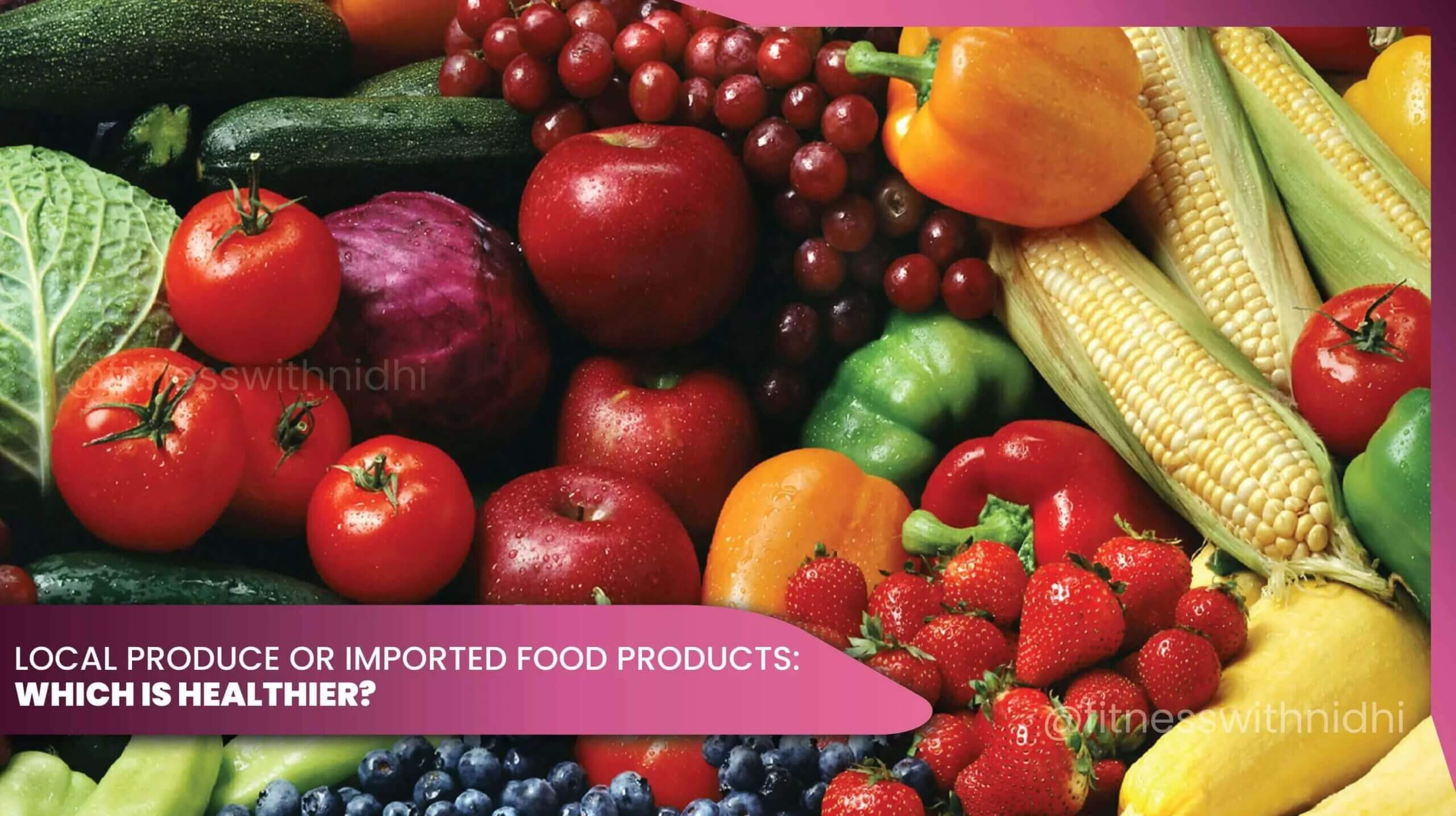Is it healthier to eat fruits and veggies grown nearby or those that travel a long way to get to your grocery store? We’ll explore this question together!
A few things affect how healthy food is, like its soil, the weather, and how it’s farmed. Local food often has some advantages, plus it helps support nearby farms!
How local food might be better for your health?

Local Fruits Vs. Imported Fruits
Local Fruits:
Indian fruits like bananas, apples, peaches, pears, plums, ber, amla, jamun, Karanda, and more are packed with soluble and insoluble fiber, which keeps your digestive system healthy.
Local produce also boasts a wealth of vitamins and minerals. Take Amla, for example. This wonder fruit contains six times more vitamin C than the same amount of kiwi! Even better, the vitamin C in amla is gentler on your stomach, making it an excellent choice for those who experience acidity or heartburn.
Imported Fruits:
Imported fruits can travel long distances, which means they’re often picked unripe. This gives them a longer shelf life but can also mean they have less flavor and fewer nutrients.
Local fruits, on the other hand, are typically picked when ripe and in season. This means they’re fresher, tastier, and packed with nutrients your body needs at that particular time of year. While our bodies can absorb nutrients from local and imported produce, seasonal fruits and vegetables might be slightly more beneficial due to their peak nutrient content.
Local Grains Vs. Imported Grains
Local Grains:
Locally produced grains like bajra, which is mainly grown in Rajasthan, jowar, which is grown primarily in Maharashtra, and ragi/nachni, which is mainly grown in Karnataka, are always affordable by the residents of that area and hence are consumed widely by them. This leads to adequate and regular intake of essential nutrients in bulk.
Imported Grains:
Imported grains like quinoa, oats, etc., have to be transported via long distances and hence are much costlier to be afforded by everyone and every day., despite being rich in specific nutrients, these don’t fulfill the daily recommended intake of many essential nutrients of the people.
Confused About Your Ideal Daily Calorie Intake? Use Our Calorie Calculator to Calculate Your Optimal Calories & Avoid Overeating!
Local Vs. Imported Vegetables
Local Vegetable Produce:
Locally grown vegetables are loaded with nutrients because they are grown at the season’s peak and are easy to reach. This makes them cheap and, hence, affordable for everyone. Local vegetables have a low carbon footprint, which makes them sustainable for the environment.
Imported Vegetable Produce:
Many imported vegetables, such as broccoli, lettuce, zucchini, red cabbage, etc., are sold at supermarkets. These can provide you with many essential nutrients and a unique taste, but the cost of their transportation makes them costlier, so many people prefer to buy them. Hence, their availability is limited to very few people in a particular strata of society. Also, imported veggies have a higher carbon footprint than those grown locally.
Conclusion
The choice of any food item is governed mainly by its health benefits and ease of availability, whether local or imported. You can eat imported as well, if it is easily available in your area, is safe in terms of fertilizers and pesticides used, and if its nutritional value is intact.
Local produce, whether regional or exotic, is often the first choice because it is cheap, readily available, available at the season’s peak, and is generally low on insecticides and pesticides.
Also Read:




